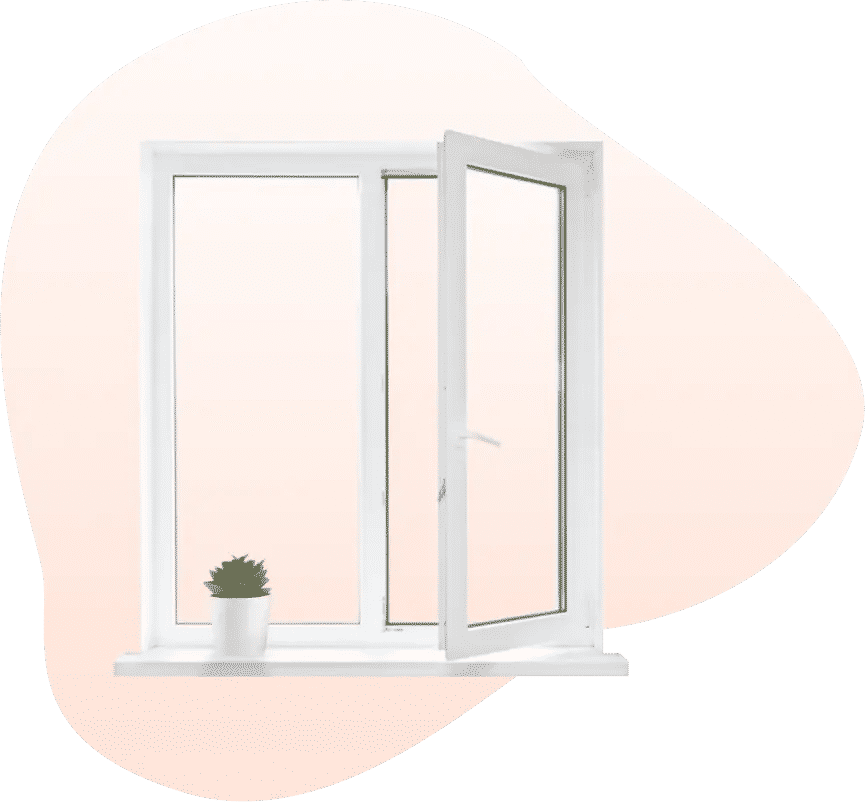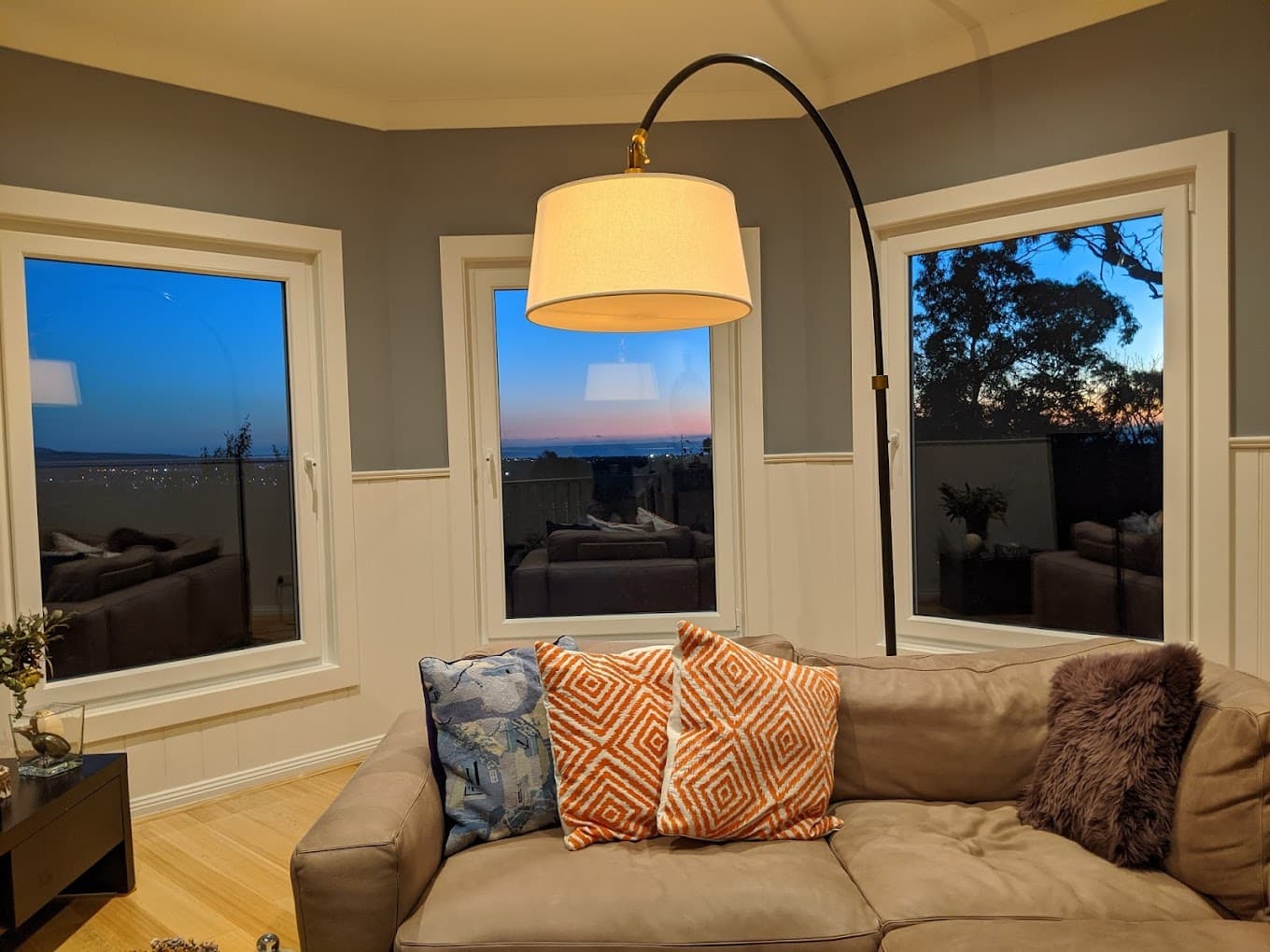Research suggests that double-pane windows can reduce cooling energy usage by 18% during the summer. It means you can successfully cut your carbon footprint and lower your energy bills with double glazing.
However, we agree. Sometimes double glazing is not the most viable or affordable option. In such circumstances, would you let go of an excellent improvement you can make to your home?
Definitely not!
Therefore, in this article, we will discuss some affordable and effective alternatives to double-glazing.
Alternatives to double glazing to improve your home
Here are some of the alternatives to double glazing you can try.
Secondary Glazing
Improve thermal insulation, stop noise pollution, and add security to your home with secondary glazing.
Double glazing involves the complete installation of a new window with two glass panes. Unlike double glazing, secondary glazing is a retrofitting technique that involves an additional window pane or glazing system installed on the interior side of your existing window.
Secondary glazing allows you to create an insulating layer of air or gas without spending a hefty amount.
The benefits of secondary glazing are the same as double glazing such as thermal insulation, soundproofing, condensation control, enhanced security, and above all, affordability.
There are various types of secondary glazing. For example:
- Vertical sliding windows
- Horizontal sliding windows
- Fixed windows
Advantages of secondary glazing
Like double glazing, the advantages of secondary glazing are far too many, including cost-effectiveness.
Thermal insulation:
Secondary glazing allows you to add another layer of protection via windows against heat and energy loss.
Stop noise:
If you live in busy, loud buildings, secondary glazing is critical to minimize outside noise penetration by dampening the sound waves, and ultimately soundproofing your house.
Cost-effectiveness:
Unlike double-glazed windows, secondary glazing allows you to enhance the performance of your existing windows without completely replacing them.
Aesthetics:
This is beneficial especially if you have historic windows to preserve their royalty and grace. Since you don’t need to replace your windows entirely, their original shape, beauty, and aura are preserved while still improving their insulation and energy-efficient properties.
Versatility:
Secondary glazing is a versatile process that can be done on almost any window. From sash windows to casement windows, you can cater to every style, size, and configuration without any issues.
Easy to install and remove:
Installing the secondary glazing is a fairly easy process that rarely requires any professional assistance. And the removal is also easy as a breeze.
Reduce condensation:
Secondary glazing, which adds another barrier and keeps the inner pane warmer, can aid in reducing condensation on windows. This helps to reduce condensation and the potential damage to window frames and other surfaces, which is especially helpful in places with high humidity levels.
Retrofitting
Retrofitting is also a very popular double-glazing alternative method. The process of retrofitting improves the energy efficiency, functionality, and aesthetic appeal of your existing windows or doors just by removing the single pane of glass and replacing it with double glazing.
However, since retrofitting is not the original double glazing method. Hence, the gap between the two panes is narrower, which may result in less insulation and soundproofing of windows.
Some of the common examples of retrofitting windows are as follows:
Applying window films:
The most cost-effective retrofitting method involves the application of thin, transparent films to your existing window glasses. Like double glazing, it improves energy efficiency and blocks harmful UV rays.
Adding weatherstripping:
One of the most common alternatives to the double glazing method is adding weatherstripping around your existing window frames. Weatherstrippings allow you to create an airtight seal that prevents drafts and air leakage and improves insulation and reduce considerable energy loss.
Adding secondary glass pane or acrylic:
This technique is also commonly called “window inserts”. That’s because you add a secondary pane of glass to the interiors of existing window frames that create an additional layer of insulation in your windows. The best part is you can DIY install or remove these window inserts easily.
Installing curtains and blinds:
Though not a direct alternative to double glazed windows, installing curtains and blinds can reduce heat transfer and save energy to an extent. That’s because, in double-glazed windows, there is an airtight gap that sits between the two glass panes.
However, with curtains and blinds, there’s no such thing. But, around 16% heat loss occurs when you install curtains with heavy material or special thermal lining. Thus, always go for curtains with a thicker material.
The most important con of curtains and blinds is they don’t completely block noise. So, if you’re looking for acoustic insulation, double-glazed windows or other alternative methods are what you need.
Closing shutters
As bizarre as it sounds, closing shutters, especially in the evening can be as effective as fitting double glazing. This is particularly true for historic or period buildings where there are built-in shutters for covering windows.
So, homeowners with period buildings should keep their working shutters for the following reasons.
1. Warmer place
If you have drafty single-glazed windows, you have the option of enhancing your thermal comfort as needed by installing shutters, which may cut heat loss through a window by 50%. In order to keep the space warmer than just windows, they accomplish this by trapping a layer of insulating warm air between the window and the shutter.
2. Energy efficiency
According to research, in older homes shutters serve the same purpose as double glazing. It shows that the installation of shutters significantly increased the window area’s energy efficiency by lowering heat loss by half, which results in a reduction in the amount of heat needed to maintain a certain room’s temperature.
3. Soundproofing
One of the best methods to stop the levels of outside noise in the house is to install shutters. This is so that most of the noise that curtains or blinds would not be able to block is absorbed by the wood that forms a barrier across the window.
Around 50% of all noise pollution entering a home may be decreased by using conventional shutters.
DIY Double glazing windows—the cheapest alternative
Since we’re talking about affordable double-glazing options, the DIY professional method is worth trying.
Why? Because you save tons of money while being in control of the job. So, it’s a win-win situation for you.
Just make sure the design and style you choose are ideal for your home by accessing all the vents and openings of your house.
Here are some tips to get the installation DIY job done right.
- Before double DIY glazing, determine whether your existing windows have an outside cill installed. If yes, your job is a lot easier.
- If you have the sash-type window, remove the window boxes first.
- According to your local climate, choose the double window glazing.
Now, here is the easiest method to DIY double-glazing windows:
- putting the window into the frame that will hold the double-glazed window.
- To keep the double-glazed window in place, spray foam around the window.
- Brass screws are required to secure the brickwork.
- Trim the extra foam after screwing in the bolts, then caulk the frame on both sides.
- Insert 2 screws on each side into a depth of 50mm using a number 10 mason master drill bit, red plugs, and number 10 screws.
Interested in insulating your home and saving on bills and energy every month?
Get your FREE Quote today!
FAQs
How do you insulate windows without double-glazing?
There are many ways to insulate windows without double glazing such as: Retrofitting your existing windows, secondary glazing, and installing curtains and blinds to reduce the energy loss.
Is double glazing worth it in Australia?
Double glazing is worth it in any part of the world including Australia because the climate is changing and it requires modern, practical ways to deal with it.
The climate in Australia is usually moderate with colder regions such as Tasmania, Victoria, or Snowy mountains. And so, you’ll see these energy-saving methods there usually.
Double glazing also improves energy efficiency and noise reduction in most parts of Australia.
How can I keep my house warm without double-glazing?
The number one cost-effective way to keep your house warm and cozy is by installing window curtains or blinds.
During the hot summer, you can cover your windows during the day, and during winter, you can let the light in for warmth and comfort. However, this option is not feasible if you’re completely blocking the noise.
Furthermore, secondary glazing is the most affordable and effective method to keep your house warm without spending a hefty amount on double glazing.
What is the cost of secondary glazing in Australia?
The average final cost of secondary glazing depends on several factors including the size and type of your windows, height, and total number of windows that need to be secondary glazed.
On average, the cost of secondary glazing is ridiculously low than double-glazed windows.




